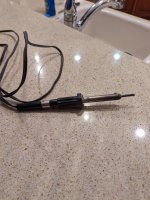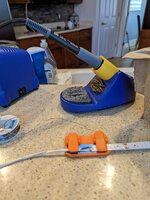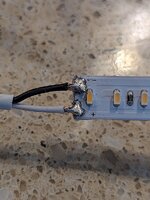It's been awhile since I soldered the parts to a Heathkit TV I built when around high school age.
So while there are solder-less connectors I get more flexibility if I solder the power wire to each light strip.
20 gauge wire.
I am not sure I have or can find my old soldering pencil.
So a new one is in order. Under $100.
I see some soldering stations with adjustable wattage and some with adjustable temp.
I need 20 to 40 watts and 360F to 370F to melt alloy solder. Per instructions for the LED light strip.
What temp would the ones be that just mention wattage? Why wouldn't they all be around 360F to 370F if designed to electronics soldering? Only the ones with adjustable temp seem to list temperature.
Suggestions?
So while there are solder-less connectors I get more flexibility if I solder the power wire to each light strip.
20 gauge wire.
I am not sure I have or can find my old soldering pencil.
So a new one is in order. Under $100.
I see some soldering stations with adjustable wattage and some with adjustable temp.
I need 20 to 40 watts and 360F to 370F to melt alloy solder. Per instructions for the LED light strip.
What temp would the ones be that just mention wattage? Why wouldn't they all be around 360F to 370F if designed to electronics soldering? Only the ones with adjustable temp seem to list temperature.
Suggestions?



